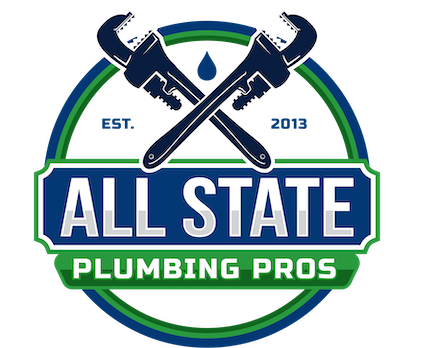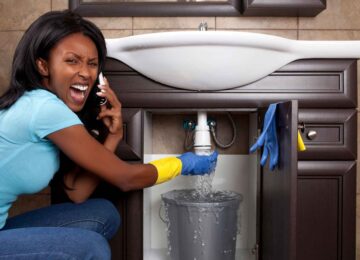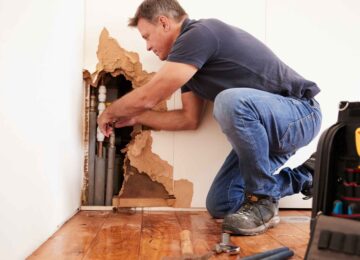A running toilet isn’t just an annoyance; it’s a silent drain on your water bill and a sign of a deeper issue inside your plumbing system. If you’ve ever walked past your bathroom hours after a flush and still heard the faint sound of water running, you’re not alone. Knowing how to stop a toilet from running starts with recognizing that even small issues like an improperly sealed flapper or misadjusted fill valve can lead to hundreds of gallons of wasted water each month.
Fortunately, most running toilet problems can be resolved without calling in a professional. With a basic understanding of how your toilet functions and a few adjustments or part replacements, you can stop a constantly running toilet and avoid inflated water bills. Let’s walk through the essential steps to diagnose and fix this common household issue.
Understanding the Issue
A running toilet is typically caused by problems inside the tank, which is the upper part of the toilet that holds water before a flush. Inside the tank are several components that control the water flow, including the fill valve, flapper, float, overflow tube, and flush lever. Each plays a role in controlling when the tank fills, how much it fills, and how water is released into the bowl.
When any of these components malfunction or become misaligned, the result is often a constant flow of water into the bowl or tank that doesn’t stop, known as a “running toilet.” Not only does this lead to a higher water bill, but it can also wear down internal parts more quickly.
Common causes include a faulty fill valve, a flapper that no longer seals properly, an incorrect float height, or issues with the chain or handle mechanism. Many of these issues are visible once you remove the tank lid, and most can be resolved with simple adjustments or replacements.
Identifying the Cause of the Problem
Before you can fix a running toilet, you need to figure out what’s causing it. Open the tank lid and observe how the components behave when you flush. Watch the float ball or adjustable float, listen for hissing sounds, and check where the water level stops.
Some signs that help narrow down the problem include:
- Water level too high and flowing into the overflow tube
- Worn-out flapper that doesn’t create a good seal
- Excess chain slack or a chain that is too tight
- Constant trickle of water from the tank into the bowl
- Float ball stuck or not rising properly to shut off the water
To verify the issue:
- Push down gently on the flapper after the tank refills. If the running stops, it’s likely the flapper needs replacing.
- Check if the chain attached to the flush rod is pulling too tightly or too loosely.
- Observe the fill valve to see if water keeps flowing even after the tank reaches the correct level.
Older toilets may have metal rods and ball cocks, while newer models use plastic fill valves and adjustable floats. Knowing your model helps in choosing compatible parts.
Adjusting the Fill Valve
The fill valve regulates the water level in the tank after each flush. If the fill height is set too high, water flows into the overflow tube continuously. Adjusting or replacing the fill valve is a common and effective fix for a running toilet.
Start by turning off the water supply line to the toilet, then flush to empty the tank. Use a screwdriver to adjust the screw on top of the fill valve, this controls the float height. Lowering the float will stop the water flow earlier, keeping it below the overflow pipe.
If adjusting doesn’t help, inspect the fill valve for wear or leaks. Over time, sediment can clog the valve or damage its seal. In that case, replacing it with a new fill valve from a hardware store is often the best solution. Be sure to follow the manufacturer’s installation instructions and test for leaks after turning the water back on.
Resolving Fill Height and Flapper Issues
In many cases, a running toilet is due to the flapper not sealing correctly or the water level being too high in the tank. The flapper is a rubber valve that covers the flush valve opening, releasing water into the bowl when you flush. If it’s damaged or misaligned, water keeps leaking into the bowl.
Start by checking the fill level mark inside your tank; the water should stop about an inch below the top of the overflow tube. If the fill height is too high, use the fill valve adjustment to lower it.
Next, inspect the flapper. If it looks warped, brittle, or doesn’t sit evenly over the flush valve, replace it. Be sure to:
- Turn off the water supply
- Remove the old flapper from its hinges
- Attach a new flapper (compatible with your toilet model)
- Adjust the chain length so there is a slight slack, but not too much
After installation, flush and check whether the tank empties properly and the flapper closes securely. If the toilet continues to run, double-check the chain adjustment and ensure no obstructions are preventing the flapper from sealing.
Implementing Solutions to Stop Running
Once you’ve identified the issue and made adjustments or replacements, it’s time to test the fix. Flush the toilet several times, observing the water flow, fill height, and whether the tank shuts off completely. Watch for lingering sounds or slow water trickles.
If the toilet continues running despite replacing the flapper and adjusting the fill valve, inspect other components like the flush lever, float, and overflow tube. Misalignment or wear in any of these parts can prevent the system from sealing properly.
Keep in mind:
- Newer toilets may have different mechanisms, such as dual flush valves or adjustable flush rods
- Always turn off the water supply before making adjustments
- Regular maintenance can prevent future issues
For long-term prevention:
- Check the fill valve and flapper every 6 months
- Clean the inside of the tank to remove mineral buildup
- Replace worn parts early before they cause water waste
Conclusion
Stopping a running toilet doesn’t have to involve a plumber or major repairs. In most cases, a small adjustment to the float or replacing a worn flapper is all it takes to resolve the issue. By understanding how the toilet tank works and staying on top of maintenance, you can save water, lower your utility bills, and keep your bathroom functioning smoothly.
Still dealing with a toilet that won’t stop running? Don’t let a minor issue turn into a major water bill. All State Plumbing Pros offers 24/7 expert service for toilet repairs and all your plumbing needs in Connecticut and New York. Contact us today to get fast, reliable help from licensed professionals.
FAQs
How do you fix a toilet that keeps running?
To fix a running toilet, start by opening the tank lid and observing the float, fill valve, and flapper. In most cases, adjusting the float or replacing a worn flapper stops the running. If that doesn’t help, try replacing the fill valve or adjusting the chain length.
What is the most common cause of a constantly running toilet?
The most common reason a toilet runs constantly is a worn or misaligned flapper. When it doesn’t create a proper seal, water keeps leaking from the tank to the bowl. Other frequent causes include high water levels or faulty fill valves.
Why won’t my toilet shut off?
If your toilet won’t stop running, it could be due to a fill valve that won’t close or a stuck float. The valve may continue to let water in even when the tank is full. Adjusting or replacing the float or valve usually resolves the issue.
How do I stop my toilet from trickling water?
A trickling toilet is often due to a slow leak from the flapper or water reaching the overflow tube. Check the water level and lower it if needed. If the flapper is worn, replacing it usually solves the problem quickly.

![How to Stop a Toilet from Running: Quick and Effective Fixes A running toilet isn’t just an annoyance; it’s a silent drain on your water bill and a sign of a deeper issue inside your plumbing system. If you’ve ever walked past your bathroom hours after a flush and still heard the faint sound of water running, you’re not alone. Knowing how to stop a toilet […]](https://allstateplumbingct.com/wp-content/uploads/2025/07/How-to-Stop-a-Toilet-from-Running-Quick-and-Effective-Fixes-750x420.jpg)



Leave a Reply